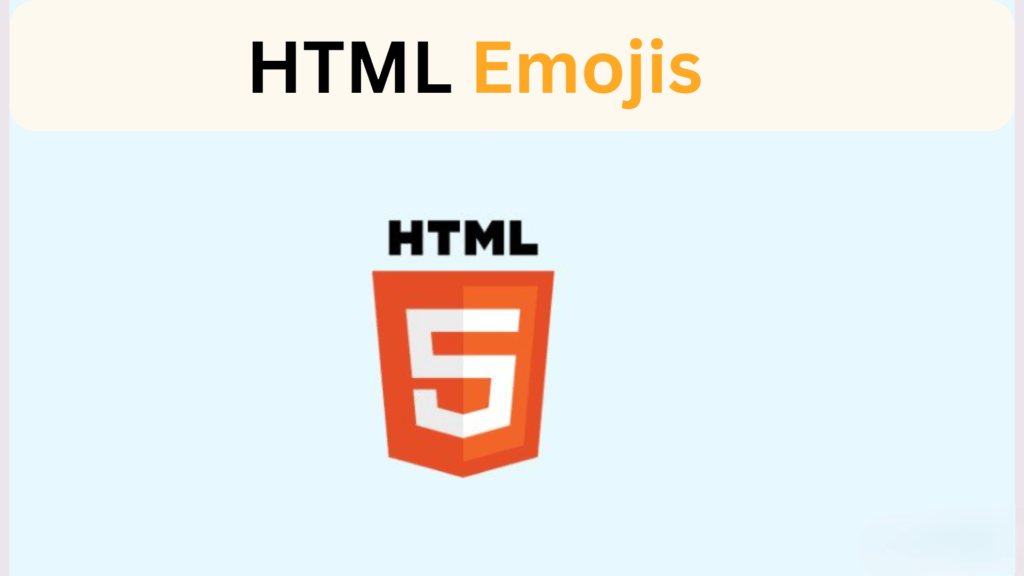HTML Tutorial
- HTML HOME
- HTML Introduction
- HTML Editors
- HTML Basics
- HTML Comments
- HTML Elements
- HTML Attributes
- HTML Headings
- HTML Paragraphs
- HTML Styles
- HTML Text Formatting
- HTML Quotations
- HTML Colors
- HTML Links
- HTML Images
- HTML Favicons: How to Add and Optimize for All Browsers
- HTML Page Title: How to Optimize Titles for SEO Success
- HTML Tables: Create & Optimize for Better Web Design | Codeezy
- HTML Lists: Types, Examples & SEO Tips for Better Structure
- HTML Block and Inline Elements
- HTML Iframes
- HTML File Paths
- HTML Layout
- HTML Computer Code Elements
- HTML Semantics
- HTML5 Semantics
- HTML Entities
- HTML Symbols
- HTML Emojis
- HTML Charsets
HTML Emojis
HTML emojis bring a dynamic and expressive dimension to web content, allowing developers to incorporate visually engaging elements into their pages. Emojis are a subset of Unicode characters and can be used to convey emotions, represent objects, or enhance user interaction in a playful and engaging manner.
How to Use Emojis in HTML
To include emojis in your HTML, you can use either their Unicode code points or emoji shortcodes. Here’s how you can integrate emojis into your web pages effectively:
Using Unicode Code Points
Emojis can be included in HTML by using their Unicode code points, which are a standardized way to represent characters. Unicode code points are written in the format ODE;, where CODE is the hexadecimal value of the emoji.
Syntax:
<p>Here is a smiley face: 😀</p>
Using Emoji Shortcodes
Some platforms or libraries provide shortcodes that can be used to insert emojis. While HTML itself does not support shortcodes, frameworks and libraries like Emoji One or Twemoji can render these shortcodes into emojis.
Syntax with JavaScript Library:
<p>Here is a thumbs up: <span id="emoji-thumbs-up"></span></p>
<script src="https://cdn.jsdelivr.net/npm/twemoji@latest/dist/twemoji.min.js"></script>
<script>
document.getElementById('emoji-thumbs-up').innerHTML = twemoji.parse('👍');
</script>
Examples of HTML Emojis
Here are some practical examples of how emojis can be used in HTML content to enhance user experience and engagement:
Example 1: Basic Emoji Usage
HTML Code:
<!DOCTYPE html>
<html>
<head>
<title>HTML Emojis Example</title>
</head>
<body>
<h1>Welcome to Our Website! 🎉</h1>
<p>We are excited to have you here. Explore our latest updates and offerings! 🚀</p>
</body>
</html>
Output:
- Title: Welcome to Our Website! 🎉
- Paragraph: We are excited to have you here. Explore our latest updates and offerings! 🚀
Example 2: Using Emojis in Buttons
HTML Code:
<!DOCTYPE html>
<html>
<head>
<title>Emoji Buttons Example</title>
<style>
button {
font-size: 20px;
padding: 10px 20px;
border: none;
border-radius: 5px;
background-color: #4CAF50;
color: white;
}
</style>
</head>
<body>
<button>Click Me! 👍</button>
</body>
</html>
Output:
- Button Text: Click Me! 👍
Example 3: Emojis in Social Media Links
HTML Code:
<!DOCTYPE html>
<html>
<head>
<title>Social Media Emojis Example</title>
</head>
<body>
<h2>Follow Us On:</h2>
<ul>
<li><a href="https://twitter.com" target="_blank">Twitter 🐦</a></li>
<li><a href="https://facebook.com" target="_blank">Facebook 📘</a></li>
<li><a href="https://instagram.com" target="_blank">Instagram 📸</a></li>
</ul>
</body>
</html>
Output:
- List Items: Twitter 🐦, Facebook 📘, Instagram 📸
Best Practices for Using Emojis
- Consistency: Use emojis consistently to maintain a coherent user experience and avoid confusion.
- Relevance: Ensure emojis are relevant to the content and context, enhancing rather than distracting from the message.
- Accessibility: Provide alternative text or descriptions for emojis to ensure accessibility for users relying on screen readers.
Conclusion
HTML emojis offer a fun and engaging way to enrich your web pages. By incorporating these visual elements thoughtfully, you can enhance user interaction and make your content more appealing. Whether you’re using Unicode code points or JavaScript libraries, the key is to use emojis in a way that complements your content and engages your audience effectively.
Thank You for Visiting Codeezy.org!
We’re thrilled to have you as part of our coding community. Your engagement and support inspire us to continue providing high-quality resources and tools to enhance your web development journey. Whether you’re a beginner or an experienced coder, we hope you found valuable insights and tools here at Codeezy.
Stay connected for more tips, tutorials, and updates to help you code with ease. Thank you for choosing Codeezy.org—your growth as a developer is our motivation!
Happy coding!

